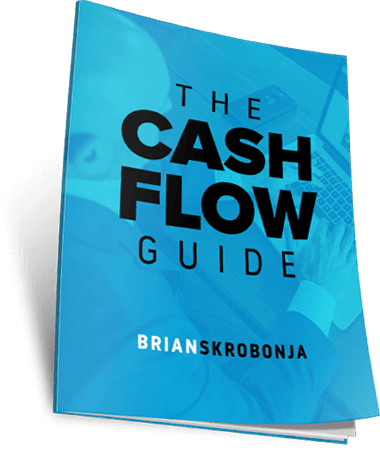If you are like many other investors out there striving to make good investment decisions for themselves, you are likely searching the internet for information about an investment’s average rate of return in an attempt to make an educated decision. What you need to know the next time you are looking at this figure is that the numbers don’t often add up and there is more you should know about “Average Rates of Return”.
I have been working with investors for 25 years and have come to learn that the public is being misled into believing that simply searching for a “good track record of performance” is what makes an investment good. If this is you I strongly encourage you to be aware of the fact that this percentage can give you a false understanding of an investments actual result, as I will explain in more detail in just a moment.
If you have researched any investment, the first thing you have likely learned is the investments average rate of return. It is how investments keep score and they use this data to compare themselves to other investments.
On the surface this data point may seem to be a good barometer of its performance. After all it is their average right? If you take their good years and their bad years and average it all out you have their performance average.
The problem is that an average rate of return does not translate into actual dollars. Now, I realize this may not make sense at first but let me explain by testing this idea using actual dollars. (Hypothetical of course)
Lets assume you are invested in a fund that has averaged 25% over the last 4 years. This fund is the king of all funds blowing away its competition. You have seen commercials for it touting how well they have done and they are being praised by Money magazine and CNBC on their great performance.
Got the picture?
So, with anticipation of phenomenal growth over the last 4 years, you open your statement to find that the original investment that you made of $100 is still $100 after four years. What? How can this be? You see the commercials, the accolades and media praise of a 25% average rate of return but you have not made any money. How is that even possible? Lets look at the math….
| Investment | Return | Balance | |
| Year 1 | $100.00 | 100% | $200.00 |
| Year 2 | $ – | -50% | $100.00 |
| Year 3 | $ – | 100% | $200.00 |
| Year 4 | $ – | -50% | $100.00 |
Well, surprise! You had an average rate of return of 25% with zero earnings. What the average doesn’t reflect are the peaks and valleys of the past performance. It doesn’t reflect losses and what it took to get back to even and as you can see this figure can give a false interpretation of what is actually happening. Consider this…
If you lose 10%, it takes 11% to get back to break even.
If you lose 30%, it takes 43% to get back to break even.
If you lose half of your money that means you have to double it to get back to where you started from, so a 50% loss requires a 100% gain just to be made whole.
This is the reality and the reason why looking at average rates of return are truly meaningless and should not be part of your due diligence. Rather, the focus needs to be on consistent earnings. The idea is to see shallow valleys on a chart that reflect a reduction in losses.
Now, there is an inherent amount of volatility and risk in everything we do but we have to make sure that our focus is on the right things and if you’re focus is on nothing else it should be on not having large losses.
Lets take the example we used earlier of an “average” 25% rate of return and lets look at a scenario where you had a consistent 25% rate of return. (I know this level of return is unrealistic but I am trying to make a point here not promise a return of 25%. I am using this example to make the point easy to understand. It is a focus on the math not the return.)
In the “average rate of return” scenario you had a 25% average but made no money. You began with $100 and ended with $100.
However, in a “consistent return” scenario using the exact same return of 25%, you would have $244 over the four years.
| Investment | Return | Balance | |
| Year 1 | $100.00 | 25% | $125.00 |
| Year 2 | $ – | 25% | $156.25 |
| Year 3 | $ – | 25% | $195.31 |
| Year 4 | $ – | 25% | $244.14 |
So as you can see, a consistent 25% return is not the same as a 25% average rate of return. In our example a consistent 1% return would have out performed our 25% annual average example. So, the next time you learn about a 4-5-6% opportunity, it would make sense to avoid the temptation of assuming 8-9-10% is better. You need to dig deeper and determine the consistency of the investment.
Now to be clear, depending on the peaks and valleys of a portfolio you obviously can make money investing over the long term regardless of averages. I am not trying to imply that you can’t. My point is to illustrate that an average rate of return does not translate into actual dollars earned and how the use of averages can be misleading. My goal is to help you understand why you should focus less on average rates of return and focus more on consistency and avoiding losses.
If you have questions about what you have learned let me know. I get questions about money and investing all of the time and am happy to try to point you in the right direction.
As always…Good luck!
Brian
The above summary and statistics have been obtained from sources we believe to be reliable, but we cannot guarantee its accuracy or completeness. Past performance is no guarantee of future results. The article and opinions in this publication are for general information only and are not intended to provide specific advice or recommendations for any individual. We suggest that you consult your accountant, tax, or legal advisor with regard to your individual situation.
A policy change may incur fees and costs, and may also require a medical examination.
The article and opinions in this publication are for general information only and are not intended to provide specific advice or recommendations for any individual. We suggest that you consult your accountant, tax, or legal advisor with regard to your individual situation. Kalos Capital, Inc. does not provide tax or legal advice. The opinions and views expressed here are for informational purposes only. Please consult with your tax and/or legal advisor for such guidance.







